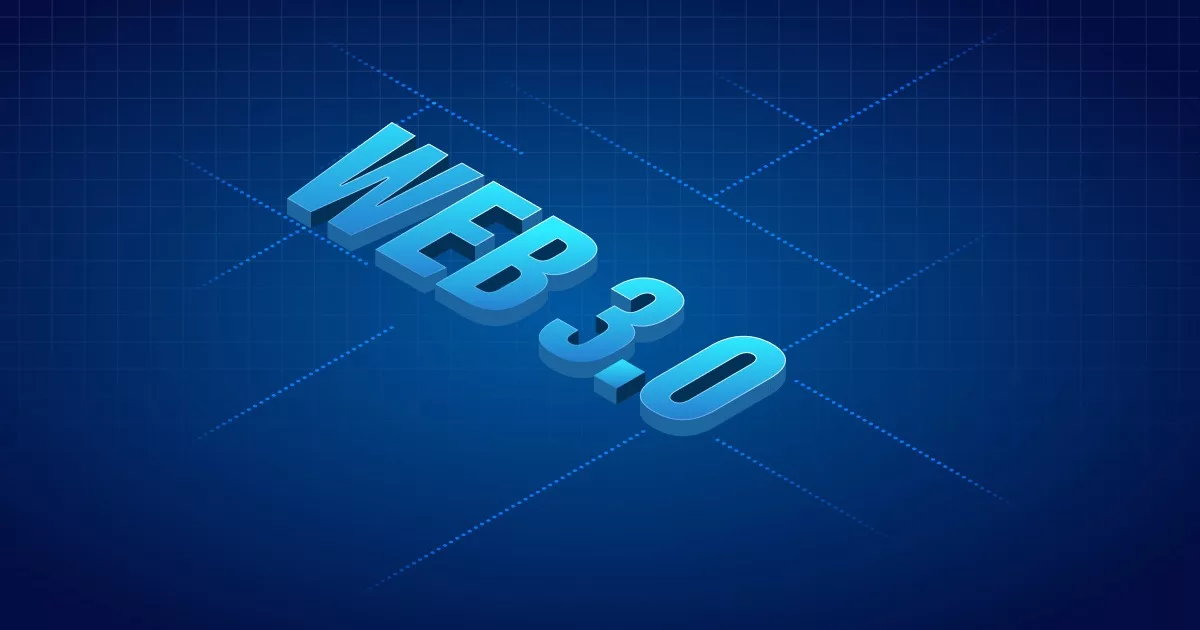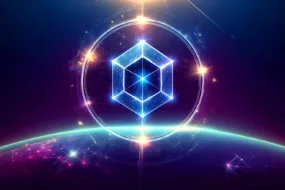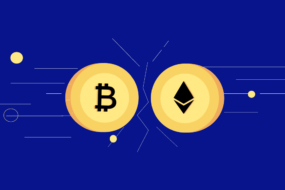
The internet has come a long way since its inception. With the recent advent of web 3.0, we are witnessing the evolution of the internet into a more intelligent and interconnected entity. Web 3.0 is about making the internet more personalized, secure, and decentralized. With blockchain, AI, and the IoT, web 3.0 transforms how we interact with the digital world. In this article, we will explore the top 10 Web 3.0 applications you should know.
Join us as we delve into the cutting-edge technologies shaping the internet’s future.
What Is Web 3.0?
You must have heard the term “Web 3.0” recently.
Experts claim it could change how we interact with the World Wide Web.
But first, let us try to understand Web 1.0 and Web 2.0 before going into Web 3.0.
1. Web 1.0: The past
Web 1.0 refers to the first version of the internet. It lasted from the late 1980s until the early 2000s.
Back then, web pages were mainly static — Read-only. So the obvious drawback was that they didn’t offer much user interaction or functionalities.
2. Web 2.0: The present
Then came the next phase of the web, Web 2.0. It is also called the participative social web. And it is also the version of the internet as we know it today.
Evidently, web 2.0 enables users to create and interact with the content — Read and Write. Moreover, it gave birth to concepts like social media, e-commerce, blogging, tagging, etc.
These developments help users participate, collaborate and make peer-to-peer (P2P) transactions on the web by relying on centralized authorities.
The issue with Web 2.0 is that a handful of companies have started to control and monetize users’ data.
3. Web 3.0: The future
Technologists perceive Web 3.0 as the next natural progression of the web. They expect it to make the internet more open, decentralized, and intelligent.
Since 2020, web 3.0 has been moving towards the decentralization narrative with the rising popularity of Blockchain.
Contrary to centralization, decentralization provides a way to break free from the monopolies of MAANG — Meta, Apple, Amazon, Netflix, and Google. This helps preserve user privacy and data ownership by reducing reliance on 3rd party intermediaries. Although a fully decentralized web sounds exciting, it might not be practical.
Lately, with the rise of AI tools like ChatGPT, web 3.0 is expected to get more intelligent.
From a user experience perspective, web 3.0 can get much more immersive, like our physical world, using 3D graphics and AR/VR devices. It is a shift from the existing 2D-internet world.
Top 10 Web 3.0 Applications
1. Decentralized cloud storage: Storj
Decentralized cloud storage is a new approach to data storage. It uses a decentralized network to store files rather than relying on centralized servers.
‘Storj’ is a popular platform that uses blockchain and P2P networks to provide secure and reliable storage solutions.
Native token
STORJ
Working mechanism
Storj uses a distributed network of nodes to store encrypted files. The nodes receive incentives in the form of STORJ rewards to provide storage space and bandwidth.
Users can access their files using a unique encryption key, and the files are distributed across multiple nodes for reliability.
Features
- Security: Files are encrypted before they are stored on the network. Thus users can retain full control over their encryption keys, and the data is protected from unauthorized access.
- Economical: Cost-effective than traditional centralized cloud storage solutions.
2. Decentralized social network: Steemit
Steemit allows users to create content, engage with other users, and earn rewards for their contributions. It operates on the Steem blockchain.
Native token
STEEM
Working mechanism
Steemit incentivizes users to create high-quality content and engage with the platform. Users who create content or engage with others earn STEEM rewards, which can be exchanged for fiat currency or other cryptos.
Features
Unlike its centralized alternatives like Facebook, Steemit offers several benefits. Traditional social networks are often criticized for multiple reasons. It lacks transparency, censorship, and data privacy issues.
In contrast, Steemit prioritizes transparency, censorship resistance, and user privacy.
3. Decentralized marketplaces: OpenBazaar
OpenBazaar allows users to buy and sell goods and services without intermediaries.
Native token
OBT
Working mechanism
Users can create listings for products or services, set prices, and negotiate with potential buyers directly without needing a middleman.
Transactions are processed using smart contracts. Therefore, it automates the payment and delivery process and ensures that both parties fulfill their obligations.
Features
- Lower Transaction Fees: OpenBazaar offers lower fees than traditional e-commerce platforms, as no intermediaries are involved.
4. Decentralized video platform: LBRY
LBRY enables content creators to publish, share and monetize their content without intermediaries.
Native token
LBC
Working mechanism
LBRY works just like Steemit. It incentivizes users to create high-quality content and engage with the platform. Users who create content or engage with others earn LBC rewards.
Features
The features are similar to that of Steemit.
5. Decentralized search engine: Presearch
Presearch enables users to browse the web in ways that were not possible in traditional search engines.
Native token
PRE
Working mechanism
Presearch operates on a blockchain network and provides a transparent, privacy-focused, and user-centric platform for search engine users.
Features
- Enhanced Search: Presearch also offers a customizable search experience. Users can choose which search engines to use and customize their search results based on their preferences.
6. Decentralized identity: uPort
uPort is a decentralized identity management platform that enables users to control their personal data and identity.
Native token
UPT
Working mechanism
Users can create a self-sovereign identity on uPort. It is secured by their private key and used to authenticate themselves on various platforms and services.
Features
- Control: Users have more control over their personal data and can share it with other parties on their own terms.
- Trust: uPort also provides a transparent record of transactions through blockchain. This ensures that users can trust the platform and that their personal data is kept secure.
7. Smart contract platform: Ethereum
Ethereum is a smart contract platform that enables developers to build and deploy decentralized applications (dApps) on a blockchain network.
Native token
ETH
Working mechanism
Ethereum offers smart contract functionality. Smart contracts are self-executing contracts that automatically enforce the terms of an agreement. They are written in a programming language called Solidity and are stored on the Ethereum blockchain.
Features
- Decentralized Applications: Ethereum has the ability to support the creation of custom tokens and dApps.
- Proof of Stake (PoS): Ethereum uses a more energy-efficient consensus mechanism called proof-of-stake (PoS) to validate transactions.
- Strong Community: Ethereum’s vibrant community of developers contribute to the platform’s development.
8. Decentralized autonomous organizations: Aragon
DAOs, or decentralized autonomous organizations, are blockchain-based entities. It operates through rules encoded in smart contracts and is run by their nodes rather than a centralized authority.
Aragon is a DAO platform enabling organizations to operate on a decentralized network. It allows individuals and groups to create and manage organizations that can function transparently and autonomously on a blockchain network.
Native token
ANT
Working mechanism
Aragon provides a framework for creating and managing smart contracts. It can be customized to meet the needs of different organizations.
Features
- Autonomy: Organizations can operate without the need for centralized authorities. The decisions can be made through a decentralized governance process that is transparent to all members.
- Ease of use: The platform provides a user-friendly interface for creating and managing decentralized organizations.
9. AI-Powered virtual assistants: Fetch.ai
Fetch.ai is an AI-powered virtual assistant platform. It utilizes machine learning to enable intelligent decision-making.
The platform allows individuals and businesses to automate decision-making processes, optimize operations, and reduce costs.
Native token
FET
Working mechanism
Fetch.ai uses autonomous agents. These are software programs that can act on behalf of their owners to perform specific tasks. With them, you can program these agents to interact with other agents, make decisions, and negotiate with other parties in an autonomous manner.
Features
- Decision making: Intelligent decision-making through machine learning algorithms
- Security: The platform utilizes blockchain to ensure data security.
10. IoT platform: IOTA
IOTA is an open-source, decentralized Internet of Things (IoT) platform.
Therefore, it enables secure data sharing and transactions between IoT devices without centralized intermediaries.
Native token
MIOTA
Working mechanism
IOTA relies on a distributed ledger technology called the ‘Tangle.’
Unlike traditional platforms, the Tangle uses a concept called the directed acyclic graph (DAG) to enable a more scalable and efficient network.
Features
- Microtransactions: This allows a wide range of use cases, such as paying for energy, charging electric vehicles, or paying for parking.
How Do Web 3.0 Applications Work?
Web 3.0 enables a new generation of web applications that use advanced technologies such as blockchain, machine learning, and smart contracts to create more secure, transparent, and decentralized systems.
Blockchain technology is at the heart of many Web 3.0 applications.
It allows for the creation of decentralized networks where data is stored on a distributed ledger, making it extremely difficult for anyone to tamper. This is because the data is verified and validated by multiple nodes on the network.
Benefits of Using Web 3.0 Applications
Web 3.0 applications offer several benefits over traditional web applications.
1. Decentralization
Web 3.0 applications use decentralized networks. It means data is distributed across many nodes rather than stored on a central server. This makes them more secure and less vulnerable to hacking or data breaches.
2. Privacy
Web 3.0 applications are designed to protect user privacy by using encryption and other security measures to ensure that personal data is not accessible to third parties without the user’s consent.
3. Trust
Web 3.0 applications use blockchain to provide a transparent and tamper-proof record of transactions. This helps build user trust and eliminates the need for intermediaries such as banks or lawyers.
4. Lower costs
Web 3.0 applications can be more cost-effective than traditional web applications. Its because they eliminate the need for intermediaries and reduce transaction costs.
5. User control
Web 3.0 applications give users more control over their data and how it is used. Users can decide who can access their data and revoke access anytime.
Conclusion
The emergence of Web 3.0 is ushering in a new era of innovation and possibilities for the internet.
The decentralized and interconnected nature of Web 3.0 is paving the way for more personalized, secure, and trustworthy applications that put users in control of their data.
The top 10 Web 3.0 applications we’ve explored in this article are just a glimpse into the vast potential of this technology.
As we embrace Web 3.0, we can look forward to a more transparent, equitable, and decentralized digital world.
FAQs
1. What is the difference between Web 2.0 and Web 3.0?
Web 2.0 is the current phase of the internet. It is characterized by user-generated content, social networking, and interactive web applications.
Web 3.0 is the next phase of the internet. It aims to create a more decentralized, secure, and intelligent web. Web 3.0 will use advanced technologies like blockchain, decentralized networks, and artificial intelligence to create more transparent and trustworthy systems.
2. What are the benefits of using decentralized applications?
Decentralized applications offer several benefits over traditional centralized applications.
It provides greater security, privacy, and transparency. It also eliminates the need for intermediaries resulting in lower transaction costs.
Also, decentralized applications offer a more user-centric experience and allow users to retain greater control over their data and digital assets.
3. How does blockchain technology enable Web 3.0 applications?
Blockchain technology provides a secure and transparent way to store and verify data on a decentralized network. This enables Web 3.0 applications to create safer and more reliable systems that do not rely on central authorities.
Overall, blockchain technology is a foundational component of Web 3.0 applications.




